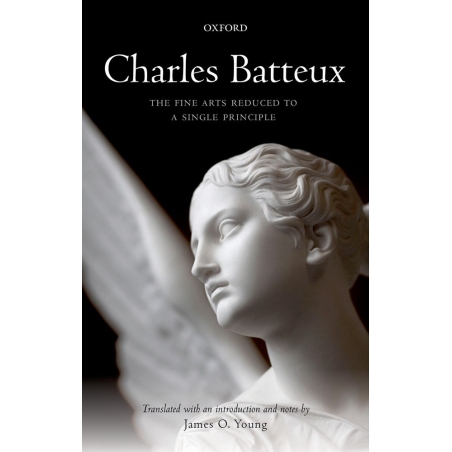The Fine Arts Reduced to a Single Principle (1746) by Charles Batteux was arguably the most influential work on aesthetics published in the 18th century. James O. Young presents the first complete English translation of the work, with full annotations and a comprehensive introduction, which illuminate Batteux's continuing philosophical interest.
CONTENTS
Acknowledgements
Translator's Introduction
Epistle Dedicatory
Preface
Part One: Where we establish the nature of the arts by reference to the genius that produced them
1 Division and origin of the arts
2 Genius is only able to produce the arts by imitation
what imitation is
3 Genius must not imitate reality just as it is
4 The state genius must be in to imitate belle nature
5 On the manner in which the arts imitate
6 Why eloquence and architecture differ from the other arts
Part Two: Where we establish the principle of imitation by reference to nature and the laws of taste
1 What taste is
2 The subject of taste can only be nature
3 Evidence drawn from the history of taste
4 The purpose of the laws of taste is to imitate belle nature
5 Second general law of taste: belle nature must be imitated well
6 There are particular rules for each artwork and taste finds them only in nature
7 Conclusion I. There is only one general type of good taste, but several particular types
8 Conclusion II: Since the arts are imitators of nature, they must be judged by comparison to it
9 Conclusion III: Taste for nature and a taste for the arts being the same, there is only one taste that applies to everything, even to manners
10 Conclusion IV: How it is important to form taste in a timely manner and how we should go about forming it
Part Three: In which the principle of imitation is verified by its application to various arts
Section One: Poetical art consists in the imitation of belle nature
1 Alternatives to the principle of imitation are refuted
2 The divisions of poetry are found in [types of] imitation
3 The general rules of poetical content are contained in the principle of imitation
4 The rules of poetical style are contained in the imitation of belle nature
5 All rules of epic poetry come from the principle of imitation
6 On tragedy
7 On comedy
8 On pastoral poetry
9 On fables
10 On lyric poetry
Section Two: On Painting
Section Three: On Music and Dance
1 Gestures and tones of voice are the keys to understanding music and dance
2 The emotions are the principal subject of music and dance
3 All of music and dance must have a referent and a meaning
4 The expressive qualities that music and dance must have
5 On the union of the fine arts




